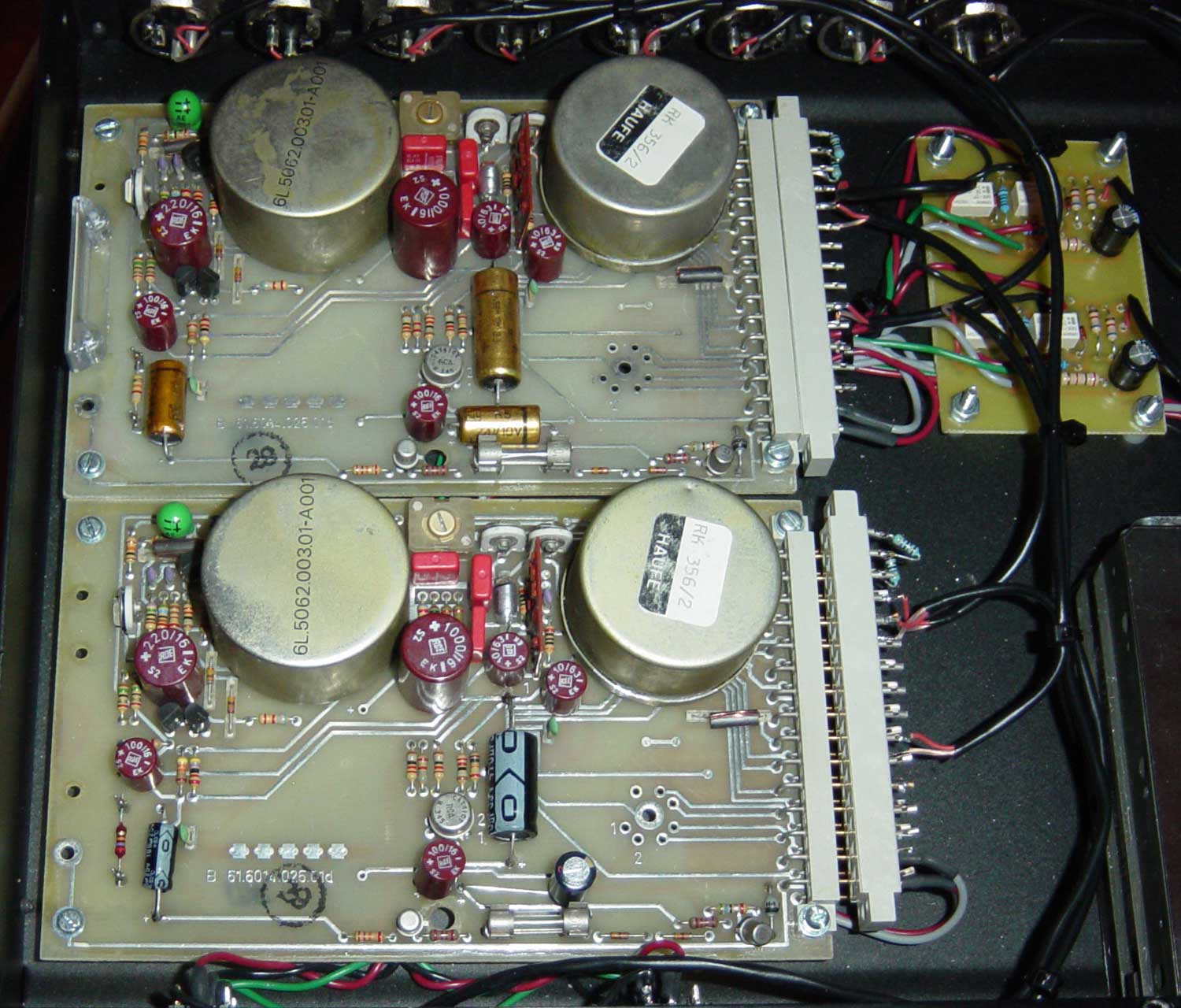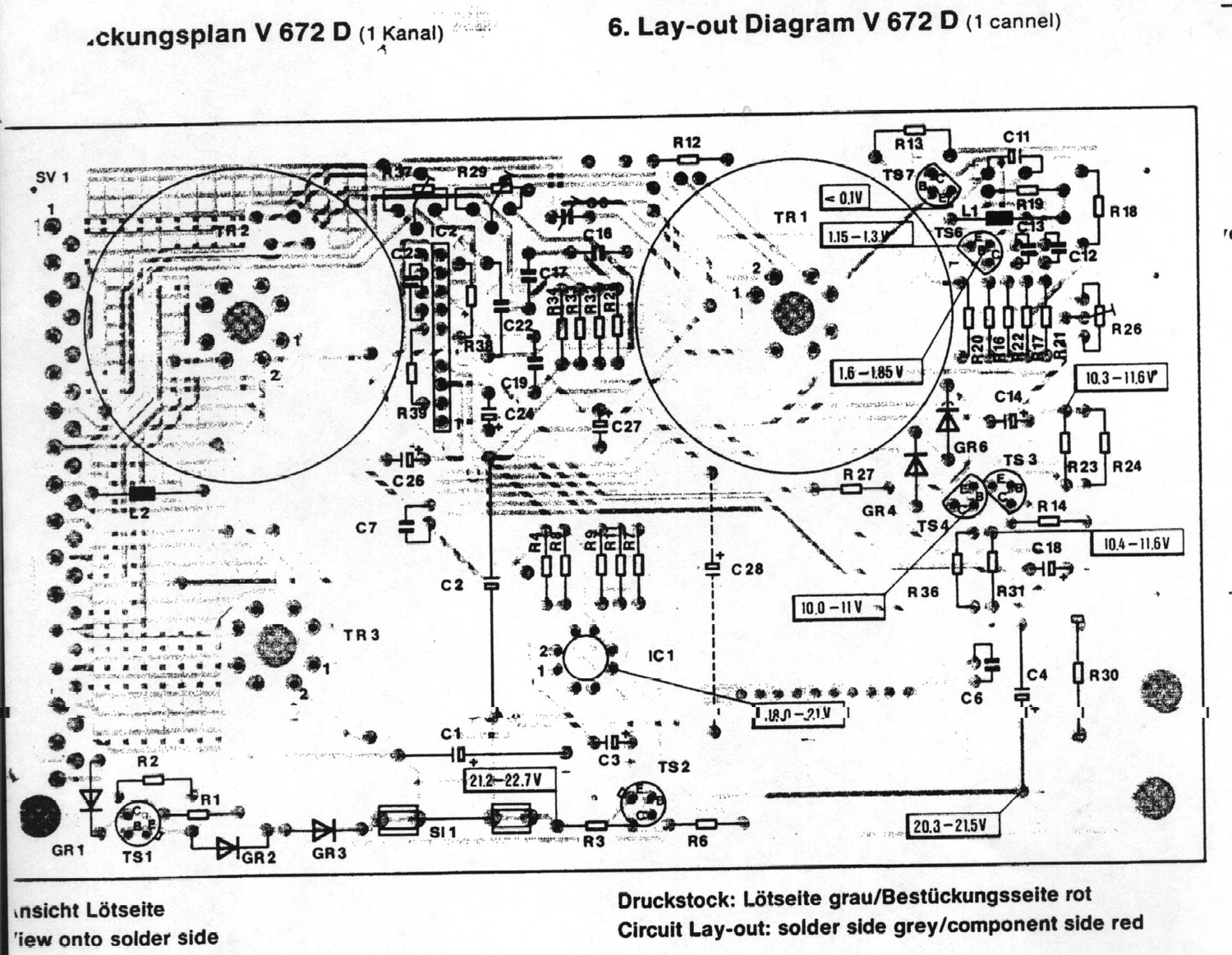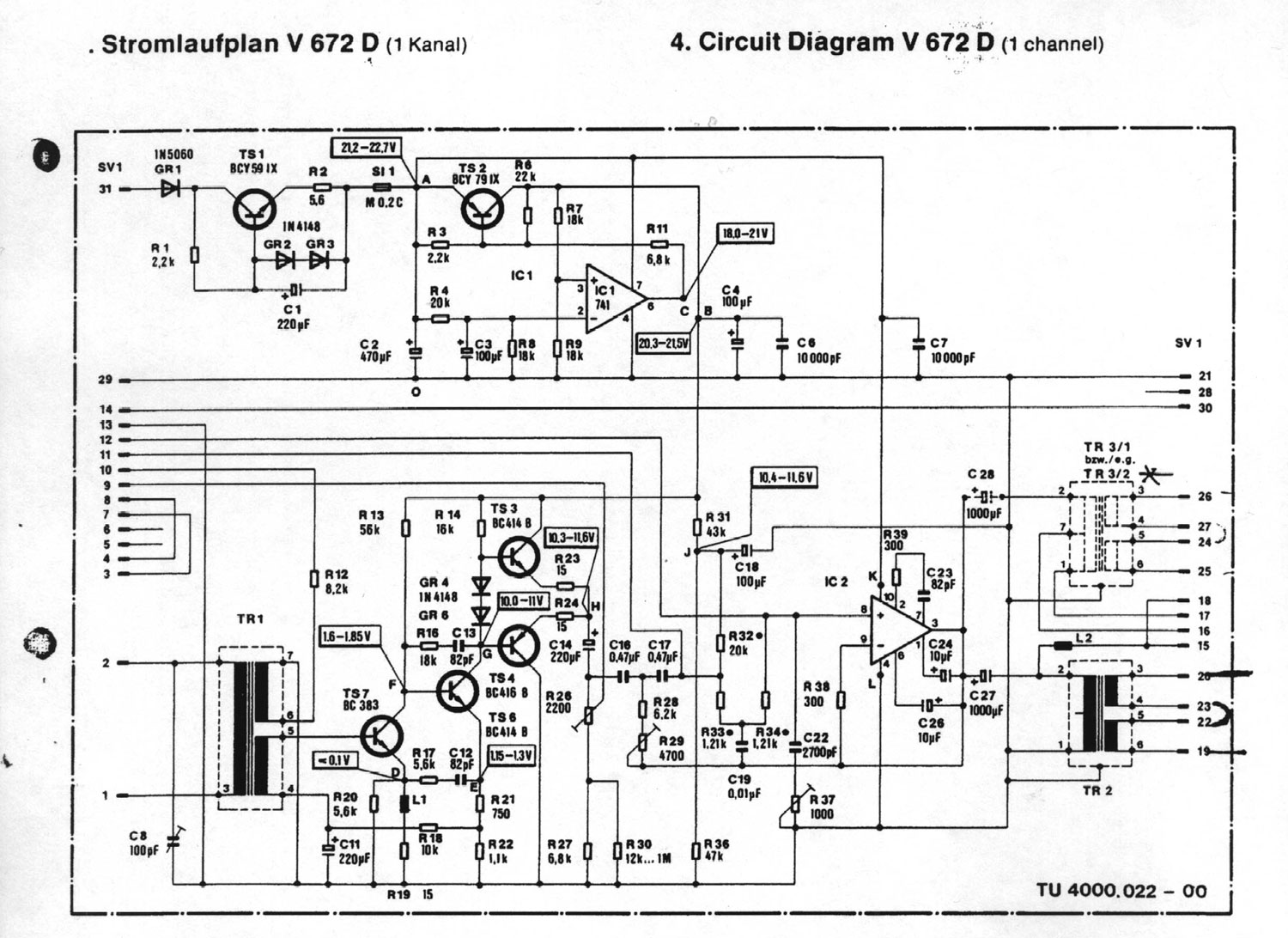matta
Well-known member
Hey Guys,
I recently purchased a ANT/Telefunken V672D (2 pres in one module) and they have been racked up (not by me, I can't take credit). One of them arrived (prior to being racked) DOA, as it prone I guess with a lot of older gear.
It passes sound at full gain, but is distorted and broken. (I will upload a clip shortly)
Some of the electro's have been swapped out as you will see from the photo below in the hope that it might solve the problem, but alas it did not and I am stuck at square one. There is no smoke on power-up and no parts that seem to have burnt out that are visible. If I leave the unit connected the PSU regs do get rather hot quite quickly.

The pinouts are correct as the other module is 100% fine (and sounds great), but this one is not.
I've been able to get hold of the parts overlay and schemo which I post below.


Does anyone have advise or experience with servicing these modules or could point me in the right direction of where I could start trying to trouble shoot this? As alot of you know I am still a newbie having built only a handful of gear and only basic trouble shooting skills have been acquired. I am limited to my my DDM but have access to scope if needed.
I'm keen to learn more and would love to try and get this guy back up and running. I think most parts should be replaceable except the op amps and tranos, so I hope it is neither one of them that has released it's smoke.
Any suggestions would be most helpful, thank as always!
Cheers
Matt
I recently purchased a ANT/Telefunken V672D (2 pres in one module) and they have been racked up (not by me, I can't take credit). One of them arrived (prior to being racked) DOA, as it prone I guess with a lot of older gear.
It passes sound at full gain, but is distorted and broken. (I will upload a clip shortly)
Some of the electro's have been swapped out as you will see from the photo below in the hope that it might solve the problem, but alas it did not and I am stuck at square one. There is no smoke on power-up and no parts that seem to have burnt out that are visible. If I leave the unit connected the PSU regs do get rather hot quite quickly.

The pinouts are correct as the other module is 100% fine (and sounds great), but this one is not.
I've been able to get hold of the parts overlay and schemo which I post below.


Does anyone have advise or experience with servicing these modules or could point me in the right direction of where I could start trying to trouble shoot this? As alot of you know I am still a newbie having built only a handful of gear and only basic trouble shooting skills have been acquired. I am limited to my my DDM but have access to scope if needed.
I'm keen to learn more and would love to try and get this guy back up and running. I think most parts should be replaceable except the op amps and tranos, so I hope it is neither one of them that has released it's smoke.
Any suggestions would be most helpful, thank as always!
Cheers
Matt


